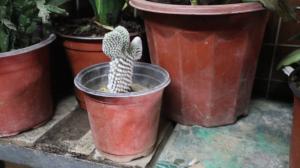Can You Paint On Plastic Plant Pots?
Plastic plant pots are a popular choice among gardeners due to their durability, affordability, and lightweight nature. However, their plain look can be a bit boring. If you're looking to give your plastic plant pots a new lease of life, you might be wondering if you can paint them. The good news is: yes, you can paint on plastic plant pots! In this article, we'll give you a step-by-step guide on how to do it.
Step 1: Clean the Pots
The first step to painting plastic plant pots is to clean them thoroughly. Any dirt, dust, or grime can affect the paint's adhesion, so it's crucial to ensure that the surface is clean and dry before painting. You can use soap and water or a mild cleaner to clean your plastic pots. Make sure to rinse them thoroughly and allow them to dry completely.
Step 2: Sand the Pots
Once the pots are dry, sanding them with fine-grit sandpaper can help the paint adhere better to the surface. Sanding will also smoothen any rough spots or texture on the pots, giving them a more polished look. Make sure to wipe off any residual sanding dust with a damp cloth before proceeding to the next step.
Step 3: Prime the Pots
Using a plastic primer can help ensure that the paint adheres to the surface of the plastic pots. Apply a thin coat of primer to the plastic pots and allow them to dry for at least an hour. You can use a spray primer or a brush-on primer, depending on your preference. Ensure that the pots are completely dry before painting over them.
Step 4: Paint the Pots
When it comes to painting plastic plant pots, you have several options. You can use spray paint, acrylic paints, or oil-based paints. Spray paint is a popular option due to its ease of use and coverage. However, regular acrylic paints and oil-based paints can also work well on plastic pots. You can use a brush or roller to apply the paint, or you can use a spray paint can if that is more comfortable to use. Make sure to apply the paint in thin coats and allow it to dry completely between each coat.
Step 5: Add a Protective Coat
Once the paint is dried, you can add a protective coat to help seal the paint and protect it from chipping or fading over time. You can use a clear acrylic sealant or a plastic-specific clear coat to finish off the job. Allow the coat to dry completely before using the pots again.
That's it – you now have painted plastic pots that will add a pop of color to your garden or home. However, keep in mind that painted plastic pots may not be suitable for some sensitive plants or those that require specific soil and environmental conditions. If you're not sure, it's best to stick with unpainted plastic pots or consult a gardening expert before making any changes.

 how many times do yo...
how many times do yo... how many planted tre...
how many planted tre... how many pine trees ...
how many pine trees ... how many pecan trees...
how many pecan trees... how many plants comp...
how many plants comp... how many plants can ...
how many plants can ... how many plants and ...
how many plants and ... how many pepper plan...
how many pepper plan...






























